Will you be welcoming a student with Autism Spectrum Disorder (ASD) into your classroom this fall? If this is your first experience having a child with ASD in your classroom you may be a tad nervous (well, likely more that just a tad). You may be wondering how in the world are you going to meet the needs of this one child while balancing the needs of the other children in your classroom. How will you handle the behaviors? What do the parents expect? Children with ASD often come with them a barrage of service providers such as Speech/Language Pathologists, Occupational Therapists, Behavioral Consultants and sometimes a 1:1 para-professional– how are we all going to be working together? You may be worrying about your lack of training in this autism and unsure if you are equipt to meet the needs of the child. Well, take a deep breath. With the proper perspective and some planning and preparation this may be the most rewarding experience of your teaching career. Just a note–I didn’t say “easy” and for sure there will be challenges, but you will be learning a lot!
Perspective
It’s been over 15 years now that the movement for including students with disabilities into general education classrooms began. I remember very clearly those first students with severe disabilites (many of whom had autism) who we transitioned into their home school district. At that time I was a part time preschool teacher in a classroom for students with ASD and a part time Speech/Language Pathologist in one of our local districts. One of my students, Tommy, who had very limited language and was not toilet trained was to be transitioned into kindergarten in the elementary school that I worked as the SLP. Tommy was clearly autistic and displayed all of the characteristics of ASD. He was very routine oriented and responded with changes in routine with pretty significant behaviors. In other words, he was not easy and I expected the transition to be very difficult. Imagine my surprise when one of the kindergarten teachers approached me and told me that she wanted Tommy in her classroom. She knew very little about autism, knew this child was challenging, yet wanted him in her classroom! I was so touched–she wanted my student who I grew to care so much about over the 3 years. Then imagine what happened when I told Tommy’s mom that a teacher wanted him in her classroom. There was a flood of tears! Over my many years of working with parents of children with disabilities, I can say that without exception, their main goal is for their child to be accepted by other children and by their community. I can tell you, for sure, parents wait anxiously for that first invitation to a birthday party–it’s like the golden ticket of acceptance. You play a criticial role in whether or not the child is truly viewed as an equal and valued member of your classroom. If you believe in your heart-of-hearts that this child belongs, that message is sent to every other student in your class. If you believe that it’s not your job to educate this child, your actions, whether intentional or not, will be clearly obvious. Of course, the child with ASD needs to learn skills, but in my view, your primary responsibility is to create a climate of community and acceptance within your classroom. No special training in autism needed to do that- just compassion.
Planning and Preparation
Let’s just say that you now have a healthy perspective. Proper perspective is necessary, but not enough. You don’t need to rush back to college to get an autism endorsement, but you do need to spend some time planning and educating yourself on autism. People with autism think and perceive the world differently and knowing this will help emensely. Here are some ideas and resources for you.
1. Curriculum Matrix. Especially during times of major transition (preschool to kindergarten, elementary school to middle school) I recommend that the child’s team get together before the transition to do a curriculum matrix. It is time consuming, but it is well worth the effort. You’ll either need to put the time in on the front end or twice the amount of time on the back end when issues arise (“a stitch in time saves nine”). The curriculum matrix is typically facilitated by a Teacher Consultant or Social Worker. The child’s team (principal, gen ed teacher, special ed teacher, all service providers, parents, para-pro if student has a para-pro) meets and literally dissects the school day. The classroom teacher brings her daily schedule and the expectations of all students and then the student with ASD is listed. If the child has a para-professional, a separate column is added which lists the responsibilities of the para-pro during that specific time. Here is an example of a snip-it of a curriculum matrix.
Click the following link to download this sample Curriculum Matrix
2. The Ohio Center for Autism and Low Incidence (OCALI) has many, many training videos on specific topics relating to autism. The videos are about 20-30 minutes in length and are incredible. To have access to the site, you’ll have to sign up, but it’s very easy to do. The videos are for both professionals and parents and cover the range of ASD from the most severe form to higher functioning autism. Once you are logged onto the site, click the modules icon and then the “Autism in the Classroom” link. You’ll then have the videos specific to classroom issues. All the vidoes are good, but I highly recommend starting with the following: Visual Supports, Transitioning Between Activities, and Language and Communication.
3. Temple Gradin’s book. There’s no better way to learn about autism than to hear or read about a personal account of an individual with autism. Temple Grandin is a very famous person with ASD who talks about how she perceives the world and her experiences growing up with autism. I read Temple’s first book, Thinking in Pictures, years and years ago and it still serves a reference for me when working with children on the spectrum. Temple’s story is so compelling that a movie was made of her life. I’m sure you could probably find it in Netflix or in your local video rental store if you prefer the movie to the book.
I also found this clip online of Temple. Pay particular attention to the point in the video when she talks about how she thinks in pictures. Processing language is particularly challenging for persons with ASD. Their brains are wired differently and Temple does a fabulous job demonstrating this in the video.
3. Children with ASD have significant difficulty understanding social cues. Using Social Stories can be very helpful for specific situations. If you are a classroom teacher, it is not likely that you will be writing social stories. I just want you to be aware of this tool. In our districts, typically the resource room teacher, school counselor, social worker or SLP will write the stories.
Here’s a link to Carol Gray’s video explaining social stories. You may want to check out The Gray Center for Social Learning and Understanding as there are tons of resources available.
There are so many resources available for you online. It’s so tempting to keep adding more, but it can get overwhelming quickly. Starting with these 3 resources will, hopefully, give you an idea of the challenges that persons with autism face on a daily basis. I’ve developed a little “cheat sheet” for you with important information that you will need to know specific to ASD.
Click the following link to download this 2-page pdf Strategies for Working With Children with ASD
It’s important to remember that children with autism are first and foremost children. Having a child in with ASD in your classroom can be the most rewarding experience.
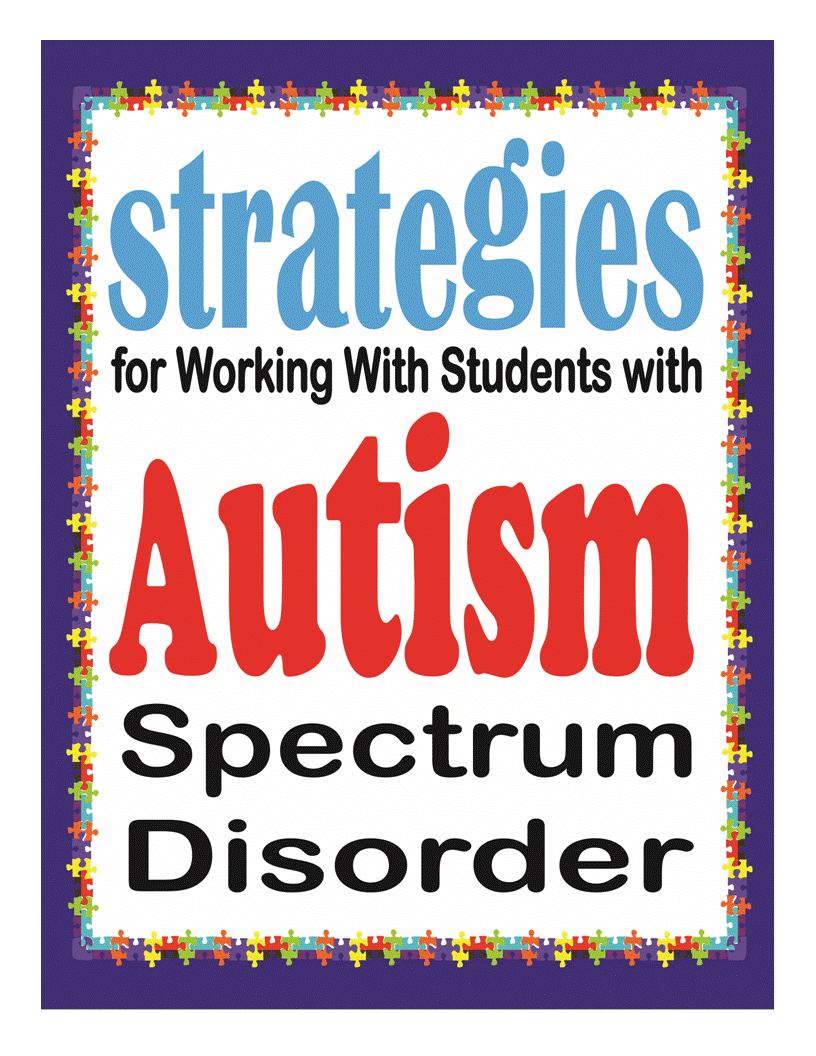
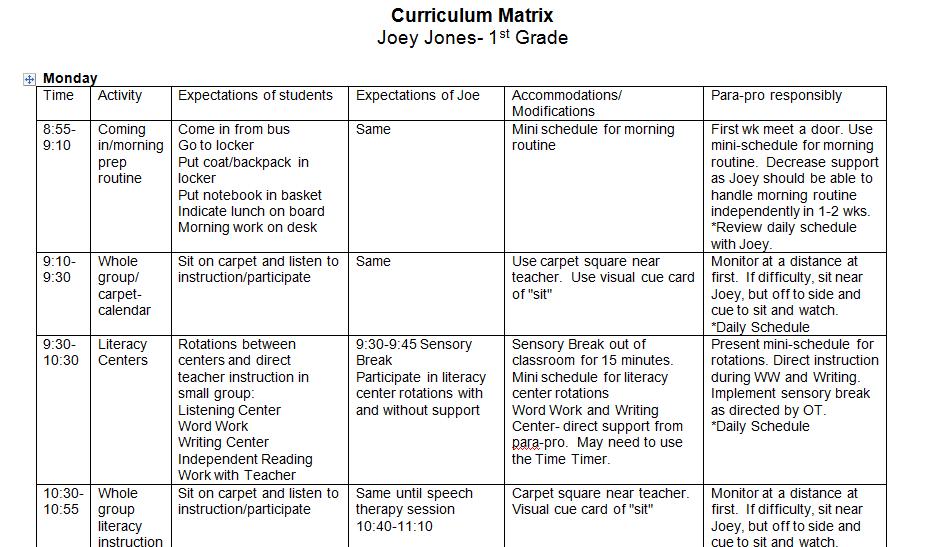
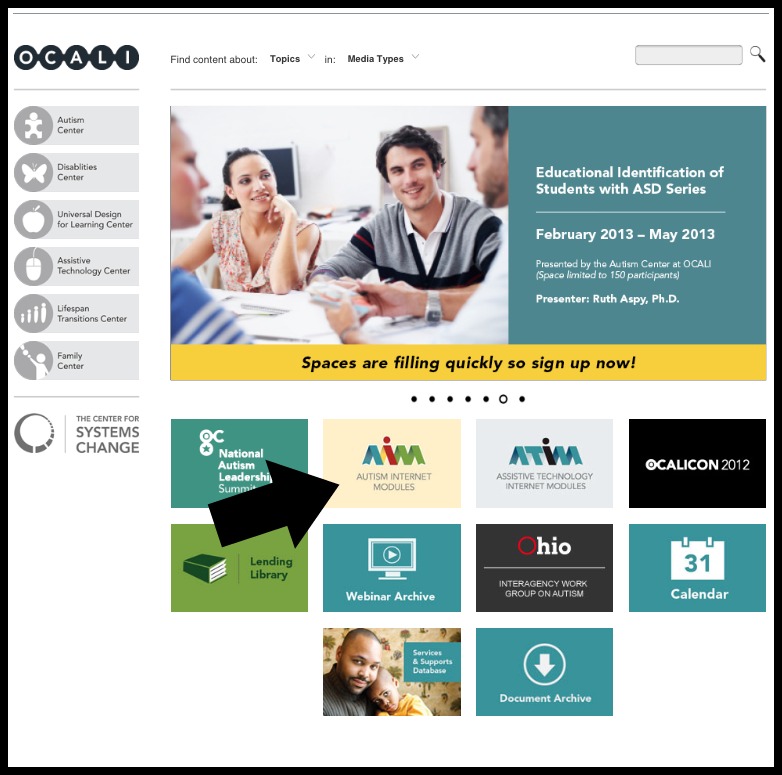
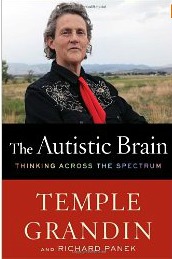
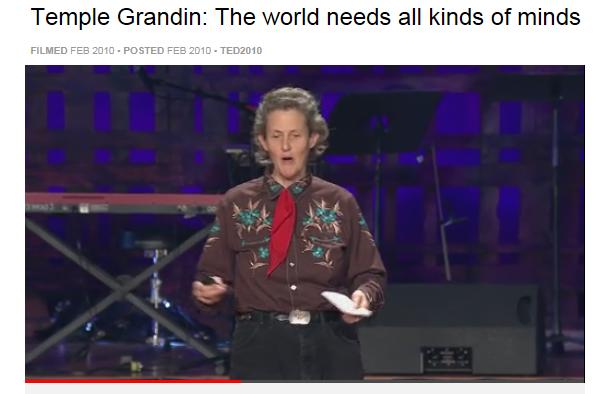
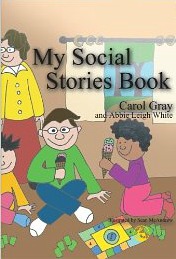
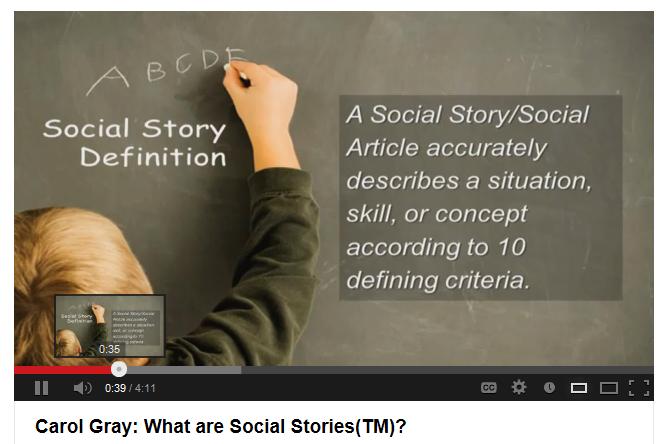
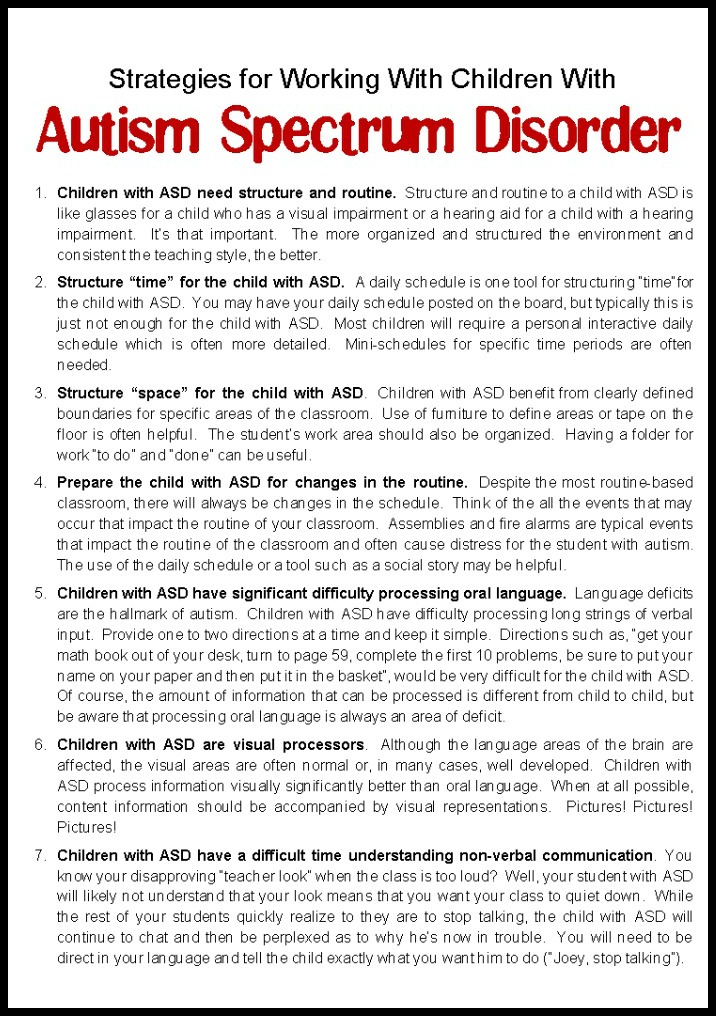

Hello:
Thank you for your cheat sheet. It provides very informative at a glance information.
Would it be possible for me to use this at my trainings for the Afterschool Programming Palm Beach County, Florida.
Thank you.
For sure. Thanks for asking. Julie